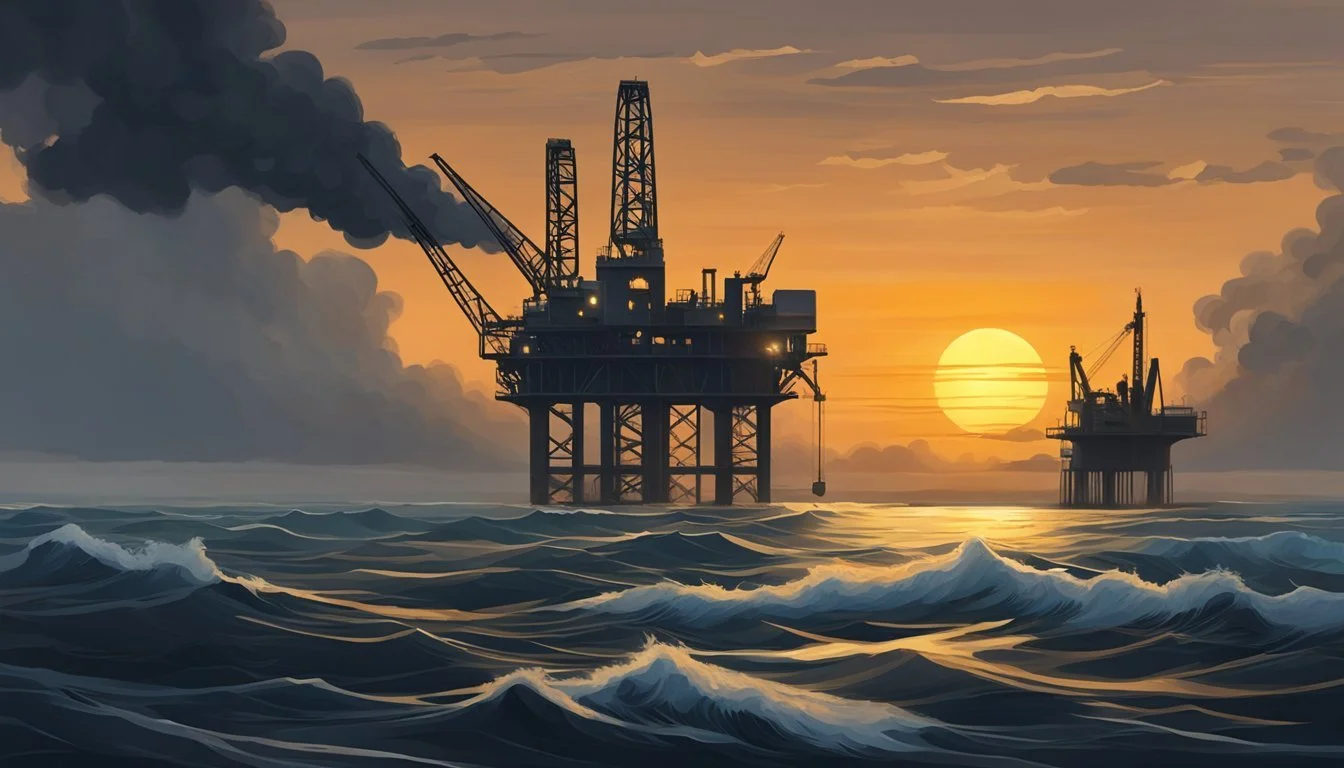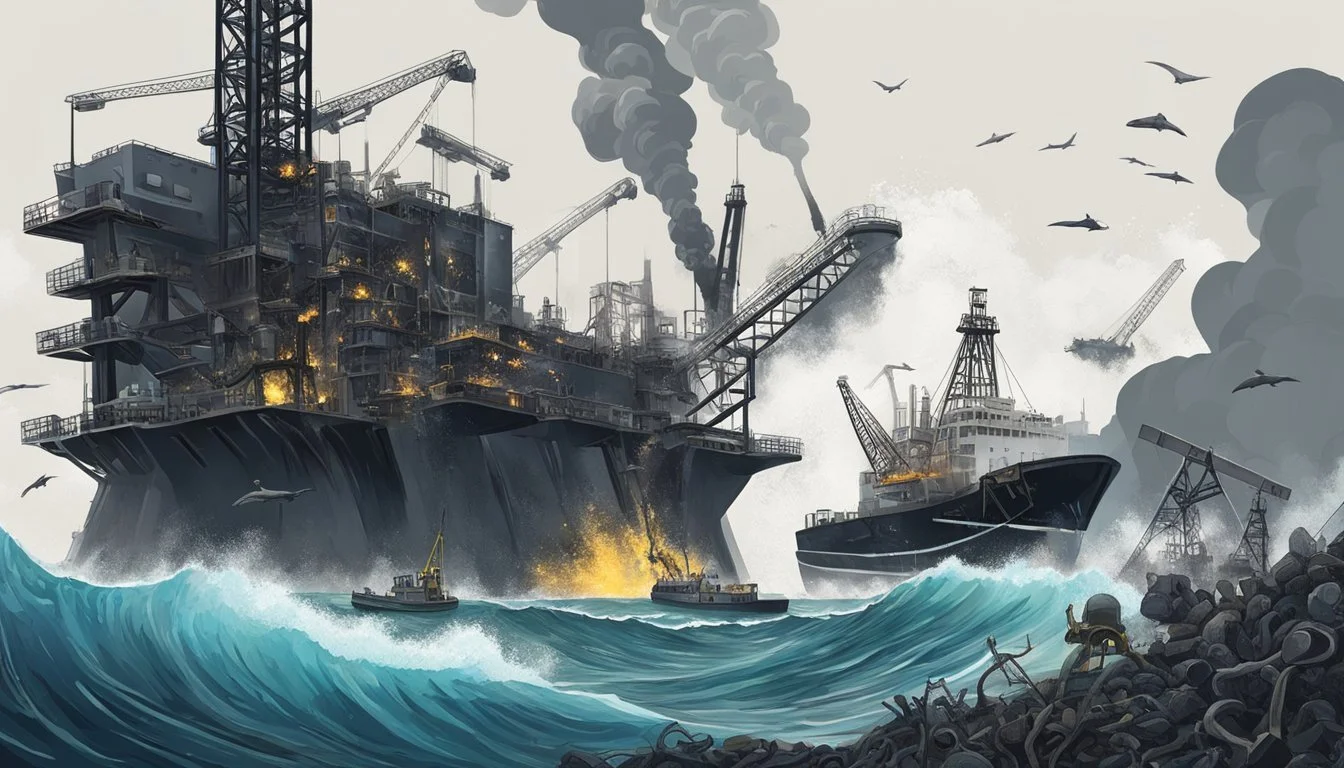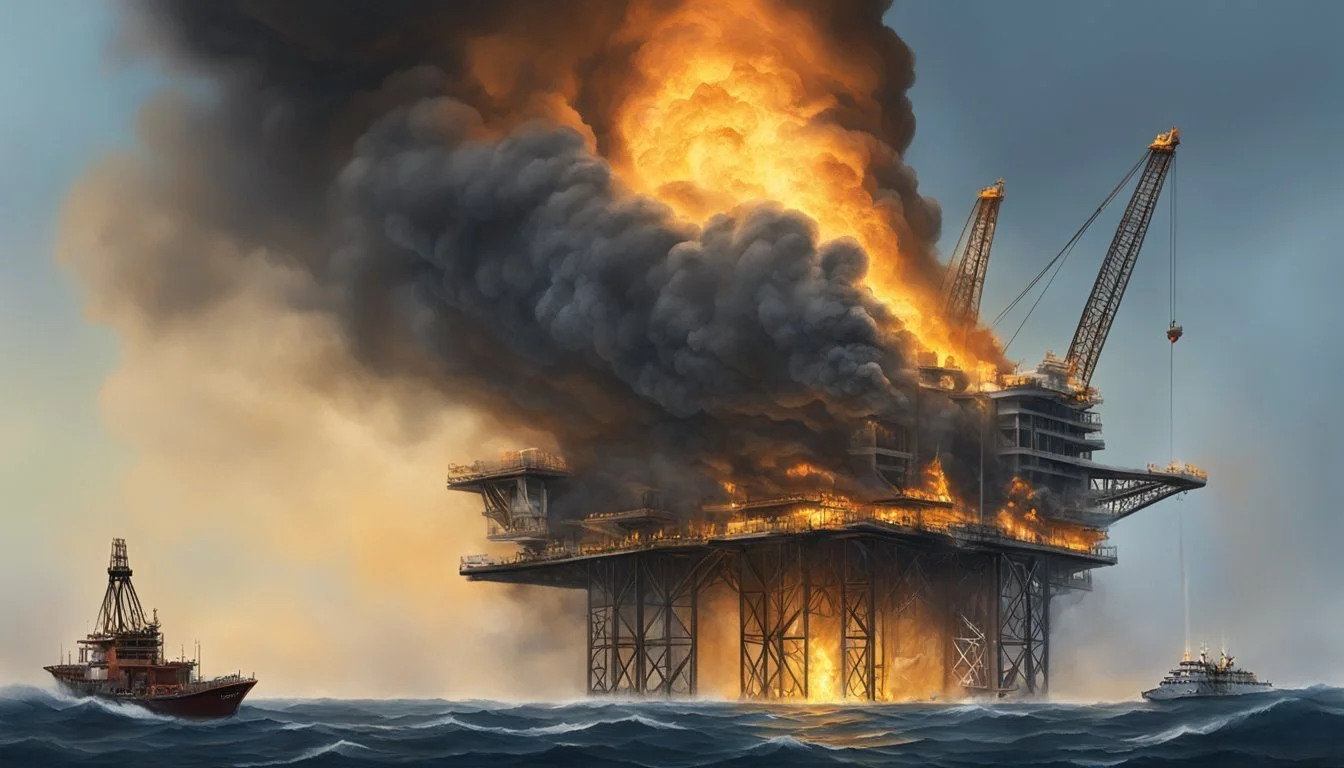8 Deepwater Horizon Documentaries That Expose the 2010 Disaster's Truth
Unveiling the Gulf Oil Spill's Hidden Realities
The Deepwater Horizon oil spill of 2010 remains one of the most catastrophic environmental disasters in U.S. history. This devastating event in the Gulf of Mexico captured global attention and sparked numerous documentaries seeking to uncover the truth behind the incident. These films explore the causes, consequences, and aftermath of the spill, providing viewers with crucial insights into the complexities of offshore drilling and its impacts on ecosystems and communities.
Documentaries like "The Great Invisible" delve into the human stories behind the disaster, showcasing the long-lasting effects on Gulf Coast residents and oil industry workers. Other films focus on the technical aspects of the explosion, examining the series of failures that led to the blowout and subsequent environmental catastrophe. By presenting diverse perspectives, these documentaries offer a comprehensive view of the Deepwater Horizon tragedy and its far-reaching implications.
Background of the Deepwater Horizon Disaster
The Deepwater Horizon incident was a catastrophic oil rig explosion and subsequent oil spill in the Gulf of Mexico. It occurred on April 20, 2010, and became one of the largest environmental disasters in U.S. history.
The Deepwater Horizon Rig and Its Purpose
Deepwater Horizon was an ultra-deepwater, semi-submersible offshore drilling rig. Built in 2001, it was designed to operate in waters up to 10,000 feet deep and drill wells up to 30,000 feet deep.
The rig was owned by Transocean and leased to BP for exploration of the Macondo Prospect, an oil field off the coast of Louisiana. At the time of the disaster, Deepwater Horizon was drilling an exploratory well about 41 miles off the Louisiana coast.
The rig's advanced technology and capabilities made it a valuable asset for offshore drilling operations in the Gulf of Mexico.
Offshore Drilling and the Oil Industry
Offshore drilling has been a crucial part of the oil industry since the mid-20th century. It allows for the extraction of oil and gas reserves beneath the ocean floor.
The Gulf of Mexico is a major hub for offshore drilling due to its vast oil reserves. By 2010, deepwater drilling had become increasingly common as oil companies sought to tap into harder-to-reach deposits.
This push for deeper drilling came with heightened risks and technical challenges. Safety measures and regulations struggled to keep pace with the rapidly evolving technology and more complex operations.
The Deepwater Horizon disaster highlighted the potential dangers of offshore drilling and sparked debates about its environmental impact and safety standards.
Chronology of the 2010 Explosion and Oil Leak
The Deepwater Horizon disaster unfolded in three critical phases: the initial explosion, the sinking of the rig, and the subsequent oil leak from the ocean floor. These events set in motion one of the worst environmental catastrophes in U.S. history.
The Initial Explosion and Fire on the Rig
On April 20, 2010, a massive explosion rocked the Deepwater Horizon oil rig in the Gulf of Mexico. The blast occurred at approximately 9:45 PM local time, killing 11 workers and injuring 17 others.
The explosion resulted from a surge of natural gas that shot up the drill column. This sudden release ignited, causing a series of explosions and a raging fire on the platform.
Nearby vessels rushed to evacuate the remaining 115 crew members from the burning rig. The Coast Guard launched a search and rescue operation for the missing workers.
The Sinking of Deepwater Horizon
For two days following the initial explosion, firefighting vessels battled the intense blaze on the Deepwater Horizon. Despite their efforts, the fire continued to rage out of control.
On April 22, 2010, the severely damaged rig began to list heavily. At approximately 10:22 AM local time, the Deepwater Horizon sank into the Gulf of Mexico.
The sinking of the rig marked a turning point in the disaster. It became clear that this was not just a tragic industrial accident, but the beginning of a major environmental crisis.
Beginning of the Oil Leak from the Ocean Floor
As the Deepwater Horizon sank, it ruptured the riser pipe connecting the rig to the wellhead on the ocean floor. This rupture allowed oil to begin gushing into the Gulf of Mexico.
Initially, BP and government officials estimated the leak at 1,000 barrels per day. However, these estimates quickly proved to be far too low.
By June 2010, the Flow Rate Technical Group revised the estimate to between 20,000 and 40,000 barrels per day. The true scale of the disaster was becoming apparent, as millions of gallons of oil poured into the Gulf's waters.
Impact on the Environment
The Deepwater Horizon disaster caused widespread ecological damage to the Gulf of Mexico and surrounding coastal areas. The spill's effects rippled through marine ecosystems and continue to impact wildlife and habitats years later.
Immediate Ecological Effects
The oil spill coated beaches, marshes, and wetlands along the Gulf Coast. Marine animals like sea turtles, dolphins, and fish suffered direct exposure to toxic crude oil. Birds became coated in oil, leading to hypothermia and drowning.
Coral reefs in the Gulf experienced severe damage from oil contamination. The spill disrupted the entire food chain, from plankton to top predators.
Clean-up efforts using chemical dispersants may have caused additional harm to marine life. Responders recovered thousands of dead animals in the months following the disaster.
Long-term Consequences for the Gulf Coast Ecosystem
Years after the spill, Gulf ecosystems continue to show signs of damage. Scientists have observed decreased fish populations and abnormalities in marine species development.
Oil residue remains in deep ocean sediments, potentially affecting bottom-dwelling organisms. Some heavily-oiled marshes have not fully recovered, leading to increased coastal erosion.
Researchers continue to monitor the long-term health effects on marine mammals like dolphins. The full extent of the spill's impact on deep-sea ecosystems remains unclear due to limited data.
Restoration efforts aim to rehabilitate damaged habitats and wildlife populations, but full recovery may take decades.
Response to the Disaster
The Deepwater Horizon disaster prompted an unprecedented mobilization of resources to address the environmental emergency. Multiple stakeholders, including BP, government agencies, and local communities, worked to contain the spill and mitigate its impacts.
Emergency Efforts to Contain the Spill
Immediate actions focused on stopping the oil flow and protecting coastal areas. BP deployed remotely operated vehicles to attempt capping the well. Containment domes were lowered to trap the leaking oil, though initial attempts failed due to hydrate formation.
Skimmer ships and controlled burns were used to remove oil from the water's surface. Massive amounts of chemical dispersants were applied both at the wellhead and on the surface to break up oil slicks.
Booms were set up along shorelines to protect sensitive habitats. Thousands of workers and volunteers engaged in beach cleanup efforts, removing oil and contaminated materials from affected areas.
BP's Crisis Management
BP faced intense scrutiny and criticism for its handling of the disaster. The company established a $20 billion compensation fund for victims of the spill.
A major public relations campaign was launched to repair BP's image. This included television ads featuring then-CEO Tony Hayward and promises to "make it right" for affected communities.
BP's internal investigation identified eight key failures that led to the blowout. The company implemented new safety measures and reorganized its upstream business to strengthen risk management and safety protocols.
Governmental Action and Legislation
The U.S. government declared the spill a "Spill of National Significance," allowing for greater federal involvement. A six-month moratorium on deepwater drilling was implemented.
The Obama administration created the National Commission on the BP Deepwater Horizon Oil Spill and Offshore Drilling to investigate the disaster's causes and recommend policy changes.
New regulations were introduced, including stricter safety requirements for offshore drilling operations. The Bureau of Safety and Environmental Enforcement was established to oversee offshore oil and gas operations.
Congress passed the RESTORE Act, dedicating 80% of Clean Water Act civil penalties from the spill to Gulf Coast restoration efforts.
Investigations into the Causes
Multiple investigations examined the complex factors that led to the Deepwater Horizon disaster. These inquiries focused on critical safety systems, the cement used to seal the well, and the failure of the blowout preventer.
Safety Systems and Failures
The BP internal report identified eight key failures that contributed to the catastrophe. These included issues with well integrity, misinterpretation of pressure tests, and inadequate well monitoring.
Investigators found that warning signs were missed or misunderstood by rig personnel in the hours before the blowout. Critical alarms and automatic shutdown systems failed to activate as designed.
The disaster exposed weaknesses in BP's safety culture and risk management practices. Investigators criticized the company for prioritizing cost-cutting over safety precautions.
The Role of Cement in the Blowout
Faulty cement was pinpointed as a major factor in the well's failure. The cement mixture used to seal the well was unstable and did not create an effective barrier against gas and oil.
Tests conducted before the incident showed problems with the cement, but these results were misinterpreted. The cement job was declared successful prematurely.
Investigators concluded that Halliburton, the contractor responsible for the cementing, shared blame for not ensuring the cement's effectiveness. The failed cement allowed hydrocarbons to flow into the wellbore, leading to the blowout.
The Blowout Preventer's Malfunction
The blowout preventer (BOP), a critical safety device, failed to seal the well as designed. Forensic analysis revealed multiple issues with the BOP's components.
One of the BOP's emergency systems, the blind shear ram, did not fully close and seal the well. Investigators found that the ram's blades were not strong enough to cut through drill pipe that had shifted off-center.
Maintenance records showed that the BOP had not been properly tested or serviced. This malfunction removed the last line of defense against a catastrophic blowout.
Legal and Financial Repercussions
The Deepwater Horizon disaster triggered massive legal battles and unprecedented financial penalties. BP and its partners faced numerous lawsuits and ultimately paid billions in settlements and fines.
Litigations Against BP and Partners
The U.S. Department of Justice filed a civil lawsuit against BP and several co-defendants in December 2010. This led to a three-phase civil trial where BP was found grossly negligent for the spill. The company faced charges under the Clean Water Act and Oil Pollution Act.
Other defendants included Transocean, the rig's owner, and Halliburton, which provided cementing services. These companies also faced legal action for their roles in the disaster.
State and local governments filed additional lawsuits seeking compensation for economic and environmental damages. Private individuals and businesses affected by the spill launched numerous civil claims against BP.
Financial Losses and Settlements
BP's financial losses from the Deepwater Horizon disaster were staggering. The company set aside $43.5 billion to cover costs related to the spill.
In 2015, BP reached a historic $20.8 billion settlement with the U.S. government and five Gulf states. This included:
$5.5 billion in Clean Water Act penalties
$8.1 billion in natural resource damages
$5.9 billion to settle economic claims
BP also paid $4 billion in criminal fines and pleaded guilty to 11 counts of manslaughter. The company established a $20 billion trust fund to compensate victims of the spill.
These financial repercussions significantly impacted BP's bottom line and reputation for years following the disaster.
Media and Cultural Resonance
The Deepwater Horizon disaster captured global attention and left a lasting impact on media coverage and popular culture. News outlets provided extensive reporting on the unfolding crisis, while filmmakers later explored the event through documentaries and dramatized retellings.
Coverage by News and Media Outlets
Major news networks dedicated round-the-clock coverage to the Deepwater Horizon explosion and subsequent oil spill. Live feeds showed the oil gushing into the Gulf of Mexico for months. Print and online media published in-depth investigative reports examining the causes and consequences of the disaster.
Journalists faced challenges accessing affected areas and obtaining information from BP and government agencies. This led to debates about transparency and corporate influence over media narratives. Some outlets were criticized for sensationalism or downplaying long-term impacts.
Social media played a key role in disseminating information and organizing grassroots responses to the crisis. Citizen journalism provided on-the-ground perspectives from impacted communities.
Hollywood's Interpretation and Filmmakers' Perspectives
Several films dramatized the Deepwater Horizon disaster, bringing the story to mainstream audiences. The 2016 movie "Deepwater Horizon" starring Mark Wahlberg focused on the rig workers' heroism during the initial explosion.
Documentary filmmakers took varied approaches to examining the catastrophe and its aftermath. "The Great Invisible" explored the human cost to Gulf Coast communities. "The Big Fix" investigated alleged corporate and government cover-ups related to the spill's true scale.
These films sparked conversations about offshore drilling safety, corporate accountability, and environmental protection. They helped keep public attention on the disaster's long-term consequences years after it faded from news headlines.






